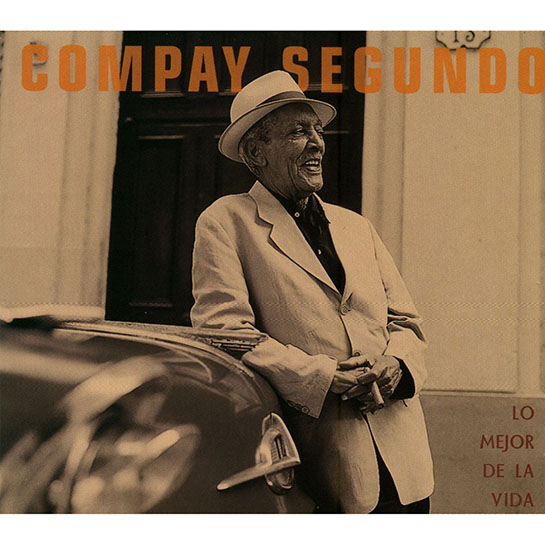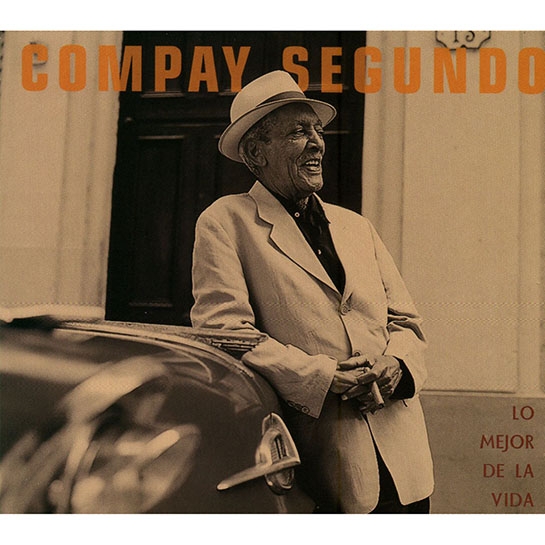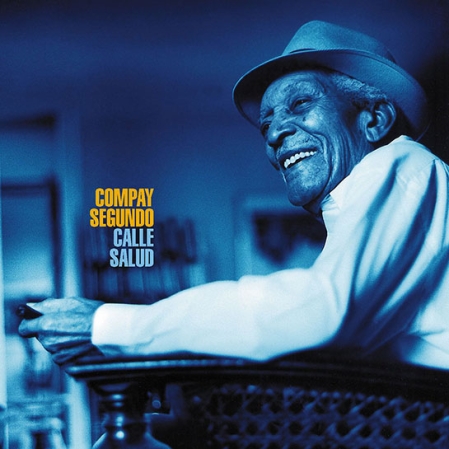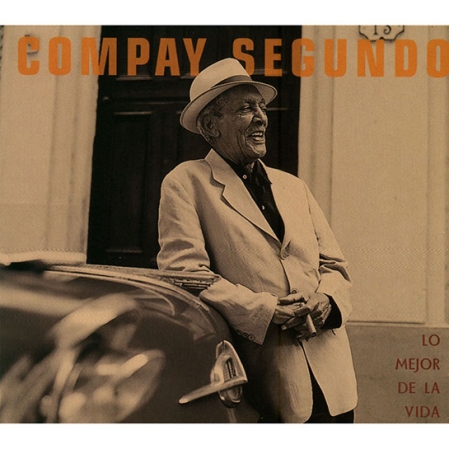Recorded in celebration of Compay Segundo’s 90th birthday, Lo Mejor de la Vida (The Best in Life) brings together some of Cuba’s most notable musicians and many personal friends to pay homage to one of the living legends of Cuban music: Segundo is joined by Silvio Rodríguez, Omara Portuondo, Pío Leyva, Raimundo Amador, Martirio, and others. Together they breathe new life into a number of Segundo’s compositions, along with new interpretations of classic songs by Benny Moré, Ernesto Lecuona, and Walfrido Guevara.
Recorded in celebration of Compay Segundo’s 90th birthday, Lo Mejor de la Vida (The Best in Life) brings together some of Cuba’s most notable musicians and many personal friends to pay homage to one of the living legends of Cuban music. On Lo Mejor de la Vida, Segundo is joined by Silvio Rodríguez, Omara Portuondo, Pío Leyva, Raimundo Amador, Martirio, and others. Together they breathe new life into a number of Segundo’s compositions, along with new interpretations of classic songs by Benny Moré, Ernesto Lecuona, and Walfrido Guevara.
The recording process began in August 1997 at the Cinearte Studios in Madrid. Segundo started by recording several songs with Raimundo Amador and Martirio. Among these is "Juliancito," a song written 50 years ago by Segundo and Lorenzo Hierrezuelo in which he insists on demonstrating that “he is flamenco.” It was followed by the bolero "Es mejor vivir así" (It’s Better to Live This Way), further evidence of the way flamenco can embrace the Cuban bolero and son.
In October 1997, Segundo continued recording in the Ojalá studios that belong to Silvio Rodríguez in Havana. There they recorded "La Pluma" (The Pen), with the great female bolero singer Omara Portuondo joining Segundo on a song originally composed in 1947 (for a commission from PaperMate pens). He also teamed up with old friend Pío Leyva, who was a one-time member of Compay Segundo y sus Muchachos in 1950, for a number of songs, including the title track and "La Juma de Ayer" (Yesterday’s Drunkenness). A collaboration with Silvio Rodríguez resulted in the duet on the bolero "Fidelidad" (Faithfulness).
Born Francisco Repilado in 1907 in Siboney, a city in the Cuban province of Santiago, Compay Segundo learned to play the tres and the clarinet in the early 1920s and participated in the development of the son tradition. He went on to work with many notable musicians, including Sindo Garay, Nico Saquito, Miguel Matamaros, and Benny Moré. He is also linked to many important groups, including El Conjunto Matamaros, which he joined in 1939, and Los Compadres, a duo formed in 1942 with Lorenzo Hierrezuelo. (It was during this period that Segundo acquired his nickname—Compay was slang for compadre, and Segundo referred to his trademark bass harmony second voice.)
In 1956, Segundo formed his own group called Compay Segundo y sus Muchachos, in which he sings backing vocals and plays an instrument of his own invention, the armónico, a hybrid between the Spanish guitar and the Cuban tres.
In 1997, Compay Segundo participated in the Grammy Award–winning recording Buena Vista Social Club, a collaboration with many of Cuba’s finest musicians, including Rubén González, Ibrahim Ferrer, Eliades Ochoa, and the American guitarist and producer Ry Cooder.
The US release of Lo Mejor de la Vida by Nonesuch / DRO East West marked Segundo’s US debut as leader. He went on to release two other solo recordings with Nonesuch before his death in 2003.
PRODUCTION CREDITS
Recorded October 1997 at Estudios Ojalá de la Habana, except “Es major vivir así” and “Juliancito,” recorded August 1997 at Cinearte, Madrid.
Mixed and mastered at Red Led, Madrid, by José Luis Crespo
Executive Producer: Luis Lázaro
Design by Martin Ogolter
Photos: Javier Salas and Manuel Zambrana
79517
This album is available from Nonesuch in the United States and Canada only.
MUSICIANS
Compay Segundo, armónico (1-14), vocals (1-14)
Benito Suárez, guitar (1-14), vocals (1, 5, 7, 10, 13, 14)
Salvador Repilado, bass (1-14), vocals (5-8)
Pedrito Ibáñez, guitar (1, 11)
Raimundo Amador, flamenco guitar (13)
Martirio, vocals (13)
Barbarito Torres, lute (7, 8)
Pío Leyva, vocals (4, 5, 10), clave (11)
Omara Portuondo, vocals (12)
Félix Valoy, vocals (3, 7, 8, 9)
Silvio Rodríguez, vocals (6)
Adél Rodríguez, bongo (1, 3, 5, 7-10)
Frank Bejerano, bongo (11, 12, 14)
Hugo Garzón, vocals (1, 2, 5, 6, 8, 10, 11, 14), maracas (1-6, 10), percussion (7, 8), guiro (14)
Basilio Repilado, vocals (5, 11)
Pedrito Ibánez, guitar (1), vocals
Elpidio Chappotín, trumpet (2)
Humberto Zaldívar, trumpet (11)
Enrique Bergery, trombone (11)
Carlos Ruíz de la Tejera, recital (14)
Cotó, tres (14)




